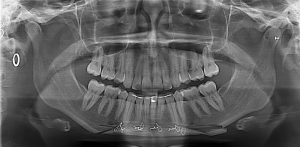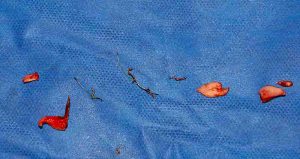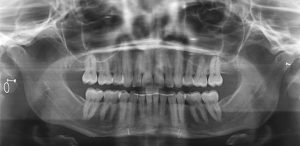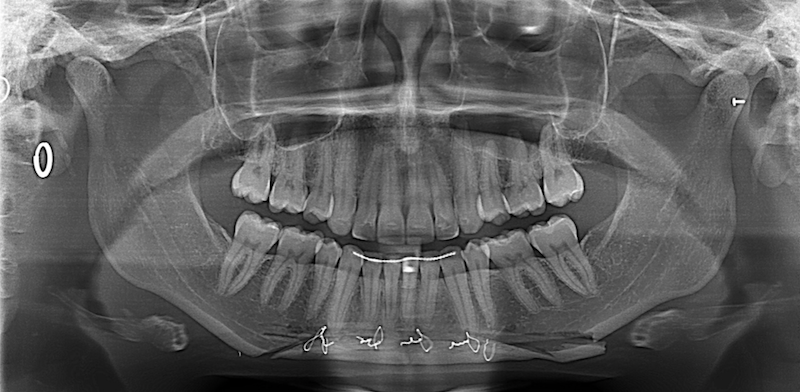Background: The sliding genioplasty procedure is done by a low angled bone cut above and through the inferior border of the chin . (anterior jawline) While there can be some asymmetry of the lengths of the bone cuts as they go to the sides inside the narrow subperiosteal tunnel, the bone is still downfractured as a single piece segment.
In doing the procedure it is important to ensure that the bone cuts are full thickness before trying to down fracture the bone segment. If the bone cuts are truly full thickness, through both cortices of the bone, the bone segment will almost just drop down on its own. Trying to prematurely down fracture the bone segment using an osteotome (chisel) or trying to complete the osteotomy cut with the chisel runs the risk of causing a fracture through the thinner wings of the bone segment. This for me is always the biggest fear so I use a reciprocating saw to make the complete cuts and I never try to force the completeness of the fracture with an osteotome.
But the risk of chin segment fracture is always present and, should it occur, it can be difficult to put it back together through the limited access of the intraoral incision. Fortunately the chin is a well vascularized bone segment even when it is down fractured so it will go on to heal. But a fractured genioplasty may not have a completely smooth inferior border when it does heal.



Fractures of the sliding genioplasty bone segments are always bit very rare. Depending upon where the bone fracture occurs will determine how anatomically it can be repaired. Unfortunately most of these fracture occurs at the lateral thinner wings of the chin bone segment where the repair is the most difficult. While it will always go on to heal, it may do so with some irregularities along the inferior border. If aesthetically bothersome these inferior border chin bone irregularities can be managed secondarily as shown in this case.
Case Highlights:
1) A sliding genioplasty has the rare risk of fracture of its wings which can be difficult to primarily repair.
2) A healed fractured sliding genioplasty can have the inferior border smoothed out secondarily through a submental incisional approach.
3) Smoothing out the irregular inferior border of the chin will make it a bit vertically shorter.
Dr. Barry Eppley
Indianapolis, Indiana



